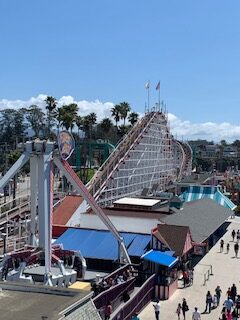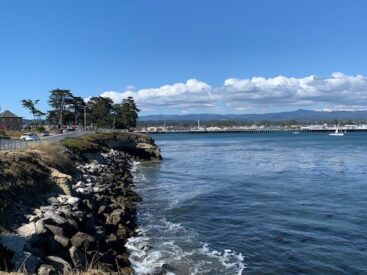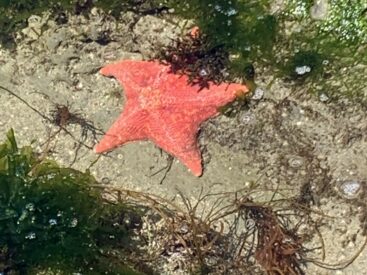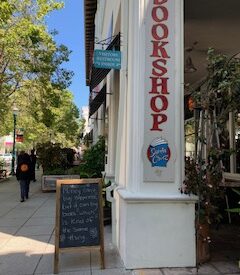 In my book A Very Typical Family, which is set in Santa Cruz, CA, my characters don’t visit the Santa Cruz Beach Boardwalk, but that was to save space. I definitely wanted them to and in fact the screams and rickety roar of the Giant Dipper is one of the first things Natalie hears when she arrives back in Santa Cruz after many years away.
In my book A Very Typical Family, which is set in Santa Cruz, CA, my characters don’t visit the Santa Cruz Beach Boardwalk, but that was to save space. I definitely wanted them to and in fact the screams and rickety roar of the Giant Dipper is one of the first things Natalie hears when she arrives back in Santa Cruz after many years away.
But rest assured, Kit will be spending many happy sunny summer days at the Boardwalk.
Growing up in Santa Cruz, the Boardwalk was always my favorite place. The why is easy–it was a fun, easy amusement park a mile from my house. It is still a wonderful place to visit with my kids. What was my favorite ride? It’s a 3-way tie between the Log Ride, the Giant Dipper, and the Looff carousel.
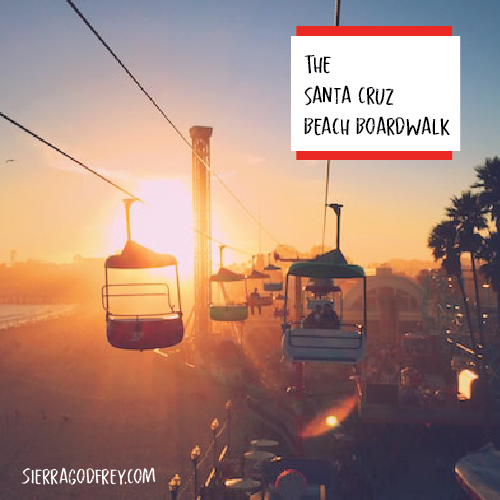
A little history
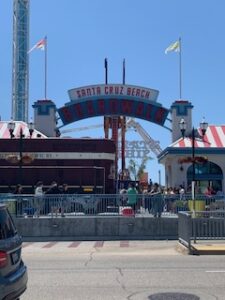
Before there was a Giant Dipper and a Boardwalk in Santa Cruz, there were the bath sheds of 1866. In 1884, the Neptune Bath House launched. In 1894, the Great Fire apparently destroyed just about everything, and the town was in sore need of diversions. In 1895, a lagoon was built on the lower San Lorenzo river for a new enjoyment: Venetian Water Carnivals. The early 1900s were all about bathing in the sea for health (a theme I am currently enjoying in Sanditon on PBS).
The Boardwalk as we know it today was built first as a casino (the Neptune Casino) on the beach in 1904 by Fred Swanton, a savvy and rather energetic promoter (and to whom I say, “Thank you sir!”). Swanton had lots of enterprises in the area, from the Santa Cruz Opera House to a baseball field, to something called The Palace of Pharmacy (which would not be amiss in today’s Santa Cruz), and to tent cities at the beach. Swanton had a gift for figuring out how to draw crowds to Santa Cruz, getting celebrities (William Randolph Hearst; Mary Pickford) and presidents (Roosevelt) to come visit.
The Neptune Casino was a pretty slick place. It had a restaurant with the chef from San Francisco’s Palace Hotel, and stayed busy hosting conventions. With the crowds came additional enterprises. The whole place was quite a draw.
The casino burned down in 1906 (as many things did in Santa Cruz), but Swanton rebuilt it in 1907, just in time for the summer season. According to the Museum of Art and History and the book Santa Cruz Coast by Gary Griggs and Deepika Shrestha Ross, Swanton’s “influence was so strong that Santa Cruz was often referred to as ‘Swantacruz.'” Let’s all take a moment to be thankful that nickname hasn’t stuck.
The Boardwalk really came into being as Casino 2.0, when it was not only rebuilt, but added to with a natatorium (what is now Neptune’s Kingdom miniature golf). An aquarium, a dance hall, a skating rink, and a scenic railway were added. A pier jutted out into the sea to stroll along (the pier was demolished in 1962).
It was probably that scenic railway that gave rise to the rest of the Boardwalk amusements in the early 1900s. The railway was an early type of roller coaster with delightful dips and speed.
The Looff carousel
Even though my characters don’t ride the carousel (a gross failure on my part), the Looff carousel at the Boardwalk, one of only a handful left in the world, is worthy of its own post. Read that post here.
The Giant Dipper
I’m preparing a whole post dedicated to this iconic wooden roller coaster, which will celebrate its 100th birthday in 2023.
The Log Ride (Logger’s Revenge)
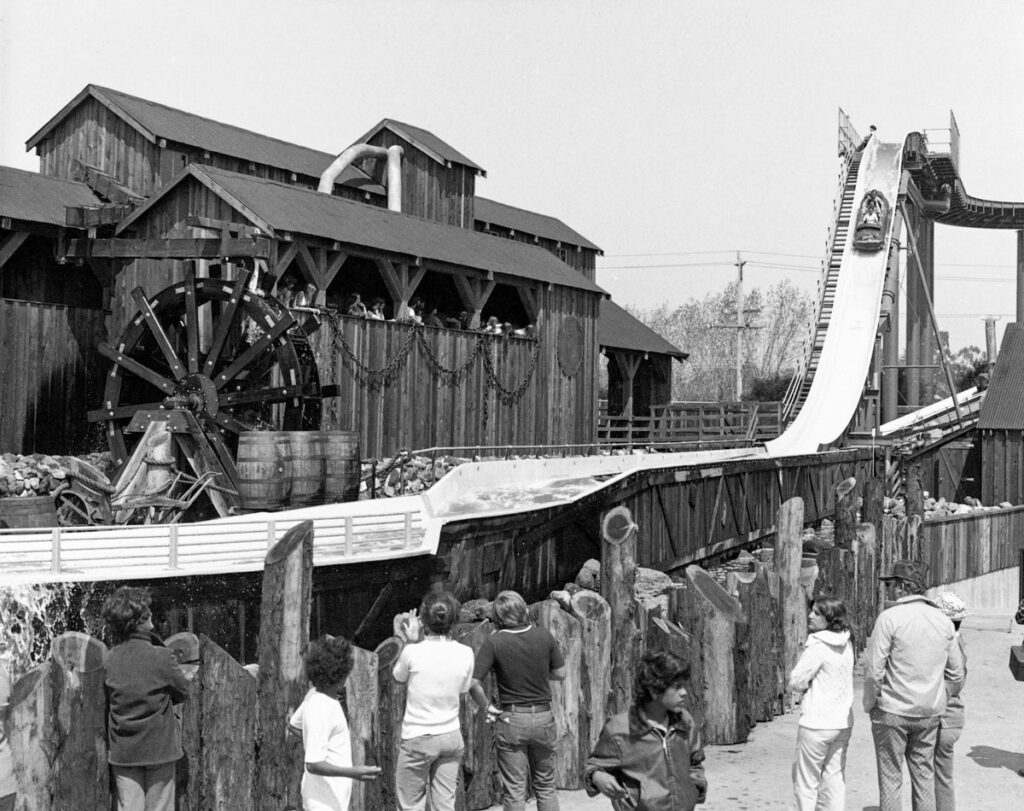
I include the Log Ride here because it’s such an unusual water flume ride. First of all, the space it takes dances an uncomfortable tango with the railroad that runs right along it, and, according to the Boardwalk, “the Boardwalk’s decades-long history of minor encroachment into the railroad right-of-way that borders the park had always been approved by Southern Pacific Railroad.” Second of all, the Log Ride affords gorgeous beach and ocean views right before you’re plunged down the water chute. I have been on many water rides in many parks, but the Log Ride is short and sweet, provides shade while you wait to ride it, and is an incredible delight.
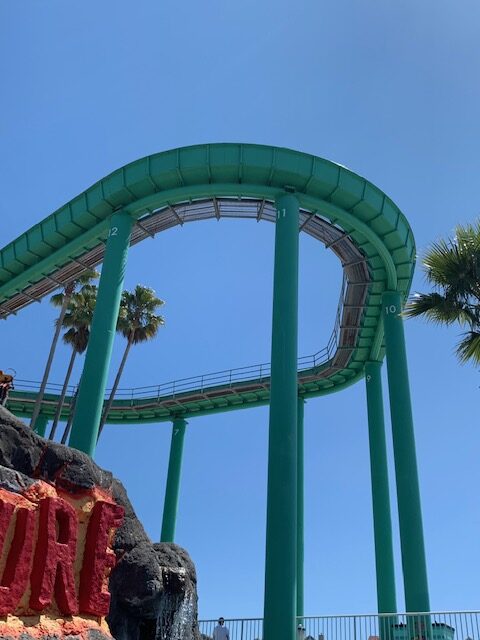
Additionally, I have always loved the way this ride, as the Boardwalk itself puts it, “salutes Santa Cruz County’s historic logging industry by making the station resemble a sawmill. The ride also pays homage to a fabled 14-mile long San Lorenzo flume that was built in the 1870s, deep in the Santa Cruz mountains.” It looks and feels like a sawmill inside. To get it that way, the owners of local Big Creek Lumber Company were asked to consult to help make the ride feel like a hundred-year-old sawmill. Real logging artifacts were salvaged from homesteads and farms, including old, rusted, even broken logging wood-working items. (I love this.) The owners found an authentic 14-ft water wheel for the exterior. According to the Boardwalk, bearings for that wheel came off the original drive wheel of the Giant Dipper and still serve as the primary bearings for the water wheel today.
The future of the Boardwalk
In the book The Santa Cruz Beach Boardwalk: A Century by the Sea, Charles Canfield, the then-president of the Santa Cruz Seaside Company who owns the Boardwalk, talks about growing up at the Boardwalk as his father, Laurence Canfield ran it. Charles mentions that Laurence toured other seaside parks across the US to listen to their challenges and successes, which ultimately drove a vision for a long-term future for the Santa Cruz Boardwalk. This proved incredibly smart as so many other of those beachside amusement parks shuttered or were crowded out for new development. The Canfield family still owns and operates this generational private company.
More to read on the Boardwalk:
 Buy A Very Typical Family
Buy A Very Typical Family
More good Santa Cruz stuff:
- My post on the Boardwalk’s Looff carousel
- My post on where to see tide pools in Santa Cruz
- My post on the blue whale skeleton at Long Marine Lab in Santa Cruz
- My post on Long Marine Lab in Santa Cruz
- My post on West Cliff Drive in Santa Cruz
- My post on the iconic Cooper House in downtown Santa Cruz

